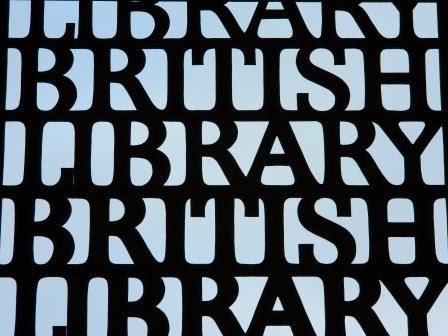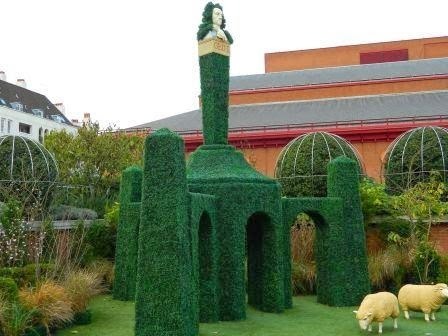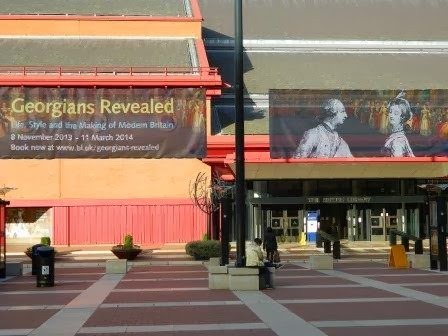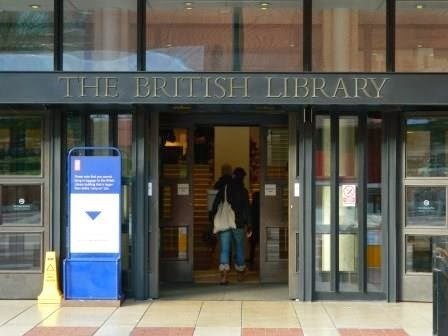
Last Saturday I had the great pleasure of visiting the British Library, London, and their ‘

Author's own photoThe exhibition celebrates the 300thanniversary of George I acceding to the English throne (in 1714) – a new king whose heirs oversaw a momentous century of change. The impression left by the

Author's own photoPerhaps it was because the venue was a library, but the importance of books and pamphlets in the 18thcentury struck me as incendiary. From the handbills promoting pantomimes, to step-by-step dance instructions; from magazines and fashion plates, to learned volumes on architecture – printed matter was key to spreading information beyond the privileged few to a wider audience. The 18th century was revealed as a time of ‘firsts’. Institutions that are still important today, such as the British Museum and the Royal Academy of Art, were founded. Most people know of Mrs Beeton and her famous Victorian cookbook, but have you heard of her fore-runner, Hannah Glasse who in 1747 produced the Georgian equivalent? Indeed, in 1754 Thomas Chippendale produced the first illustrated catalogue of furniture, and in 1765 Josiah Wedgewood opened his first London showroom selling fine china and porcelain.

Author's own photoHobbies and pastimes that are familiar to us today had their root in the 18th century. For instance an early form of tourism, visiting the country house, was popular and some venues such as Lord Cobham’s estate in Stowe produced their own guidebooks. Ladies magazines such as the ‘Ladies Complete Pocket Book’ printed fashion plates with exhaustive descriptions of the latest gowns. This meant anyone could copy the designs and up-to-date fashion spread beyond the aristocracy. Fashion celebrities such as Fanny Murray were spawned, whilst printed cartoons by Rowlandson, Gilray and Cruikshank made it legitimate to laugh at ones superiors publicly in a way previously frowned on.

Author's own photoIt was also a time of huge growth for the city of London itself. Until the mid-18th century there were just five bridges across the Thames, but to feed the growing capital more were built. London expanded across fields and farms, many of today’s landmark squares were designed and created by architectural greats such as Adams, Palladio and Soane. Again, the magic of the exhibition was not just seeing contemporary prints of the buildings these architects created, but viewing the actual books they wrote and published. If you haven’t guessed by now, I felt thoroughly inspired by the ‘With thanks to Cheezburger.com
Published on December 04, 2013 00:48
 newest »
newest »
 newest »
newest »
 Thanks Grace. I loved your writing and pics. I only wish I could get to London myself. I am VERY envious.
Thanks Grace. I loved your writing and pics. I only wish I could get to London myself. I am VERY envious.
 Awh, thank you, Elaine. In truth I live within commuting distance... but what is it they say about 'familiarity breeds contempt'? For many years I took London for granted and it's only now my children are nearly grown up that I've started exploring in more depth.
Awh, thank you, Elaine. In truth I live within commuting distance... but what is it they say about 'familiarity breeds contempt'? For many years I took London for granted and it's only now my children are nearly grown up that I've started exploring in more depth.







